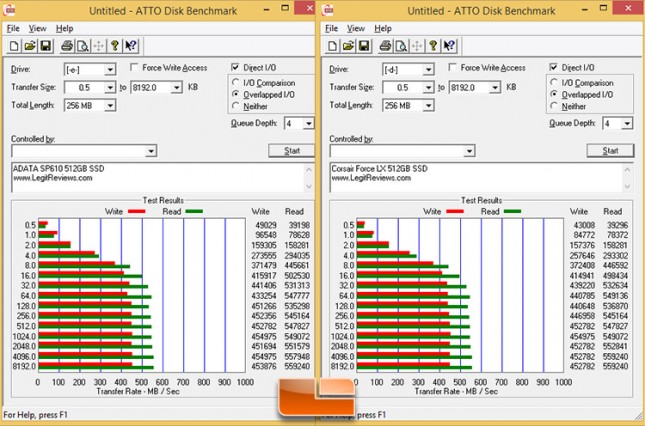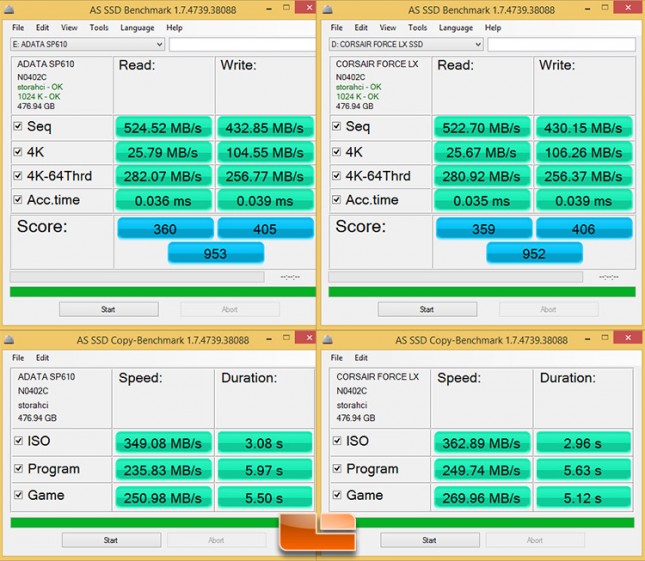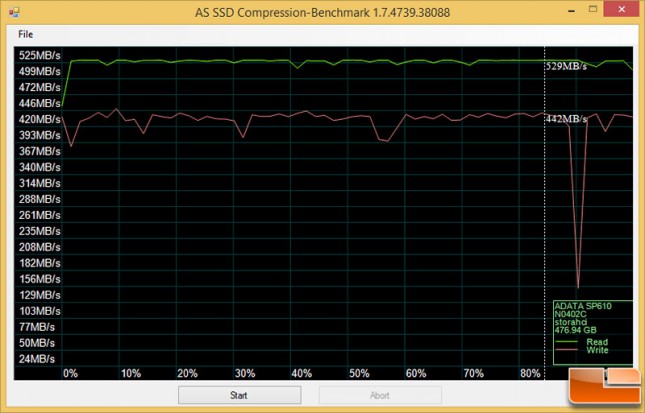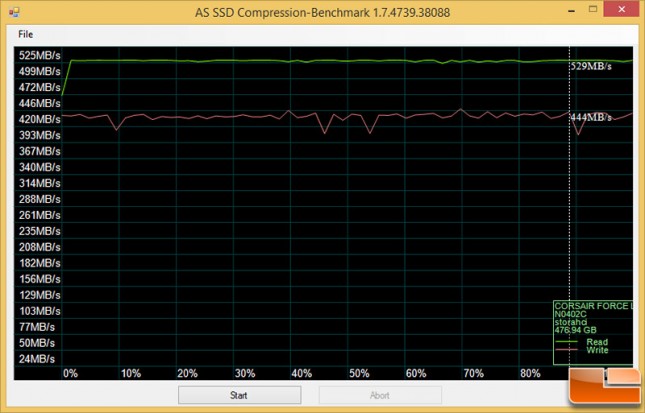SSD Review – ADATA SP610 512GB Versus Corsair Force LX 512GB
ATTO & AS-SSD Benchmarks
ATTO v2.47
ATTO is one of the oldest drive benchmarks still being used today and is still very relevant in the SSD world. ATTO measures transfers across a specific volume length. It measures raw transfer rates for both reads and writes and places the data into graphs that can be very easily interpreted. The test was run with the default runs of 0.5KB through 8192KB transfer sizes with the total length being 256MB.
ATTO – Overlapped I/0:
Benchmark Results: ATTO showed both the ADATA Premier SP610 512GB SSD and the Corsair Force LX 512GB maxing out at 559 MB/s read and 455MB/s write in the standard overlapped I/O benchmark. Both of these drives are rated at 560MB/s read and 450MB/s write, so we are spot on with our benchmarks!
AS-SSD (1.7.4739.38088) Benchmark:
We have been running the AS-SSD Benchmark app for over some time now and found that it gives a broad result set. The programmer has worked very hard on this software and continues to make updates often so if you use it, show him some love and send him a donation. There are now three tests that are found within the tool and we’ll show the results from all three of them.
Benchmark Results: AS SSD both drives topping out at around 523-525 MB/s read and 430-432 MB/s write in the sequential benchmark. The overall score between the two drives was just over 950 points with just a single point separating the two drives. The copy benchmark showed some minor differences, but we know that there is some variance in that benchmark test so we still comfortable saying there is no significant difference between the two drives here again.
Benchmark Results: Performance on the ADATA SP610 and Corsair Force LX 512GB drives appeared to be fairly consistent when it came to compressible data as read performance was 529MB/s over the entirety of the drive and the write scores were right around 440MB/s. There was one unexplainable dip near 90% on the ADATA Preimer SP610 512GB SSD that was unexplainable and was present no matter how many times we ran the compression test. Both drives are basically identical down the the firmware, so it doesn’t make sense, but it is what it is.




